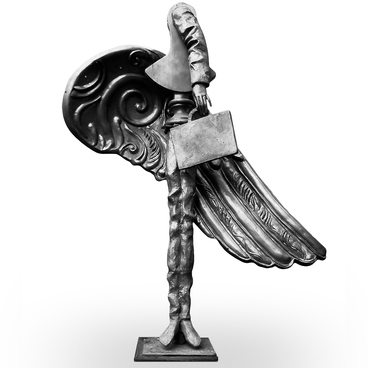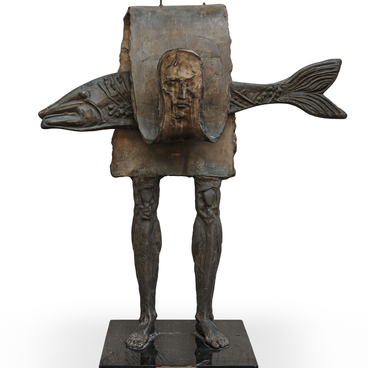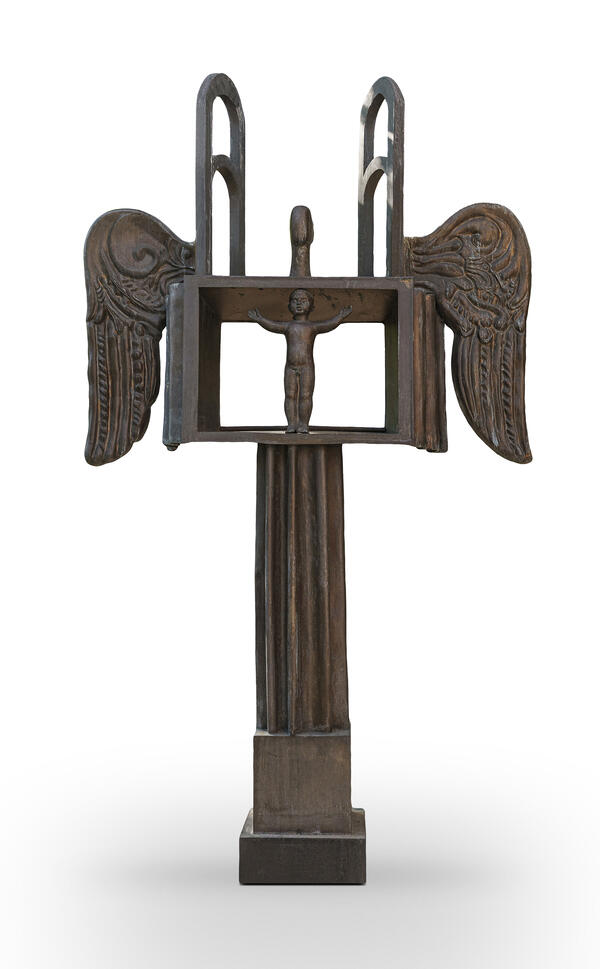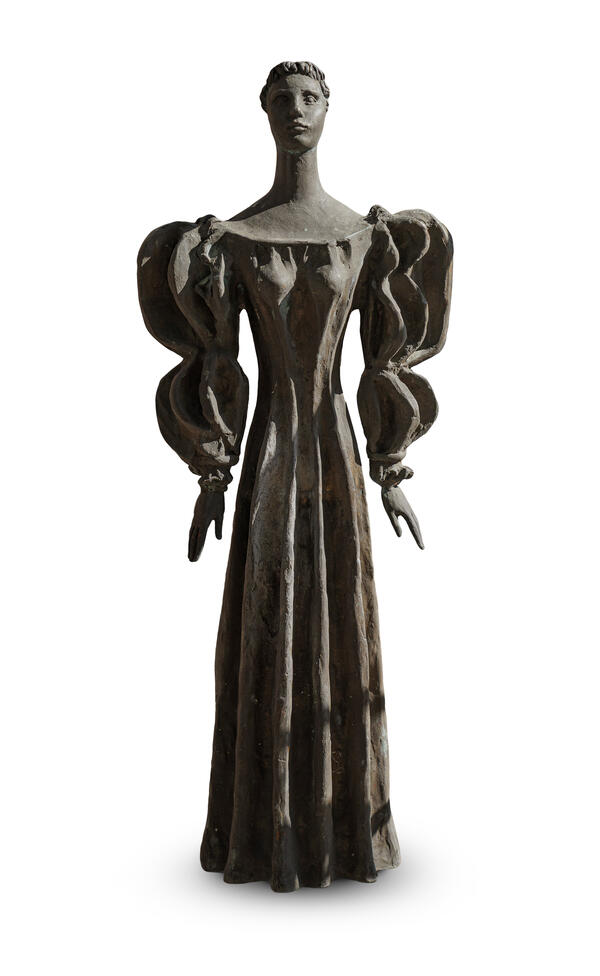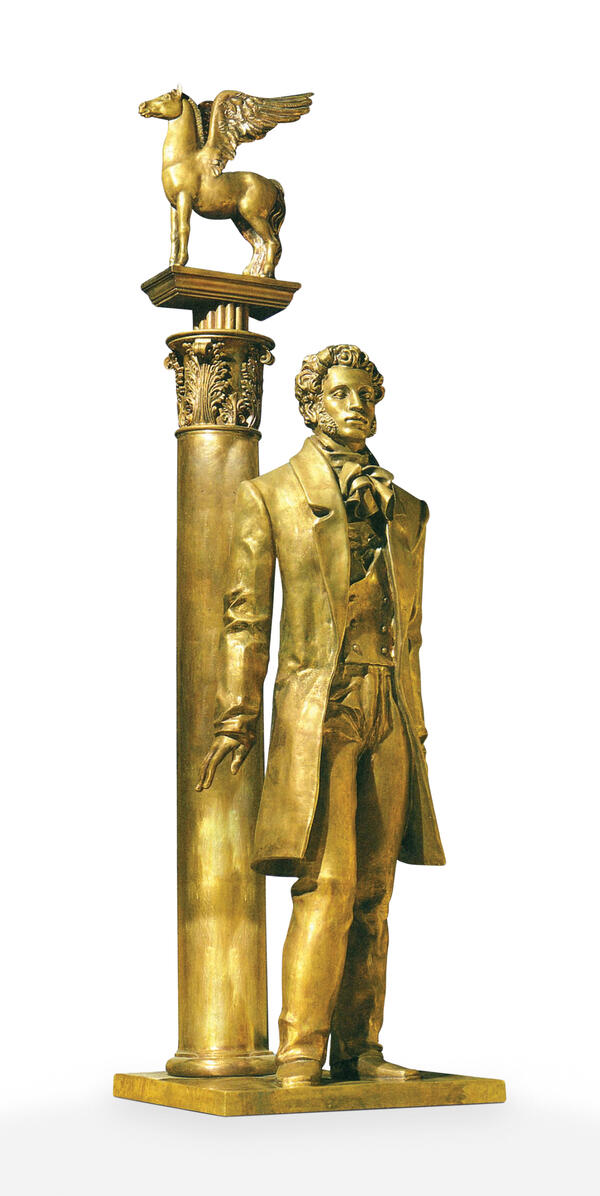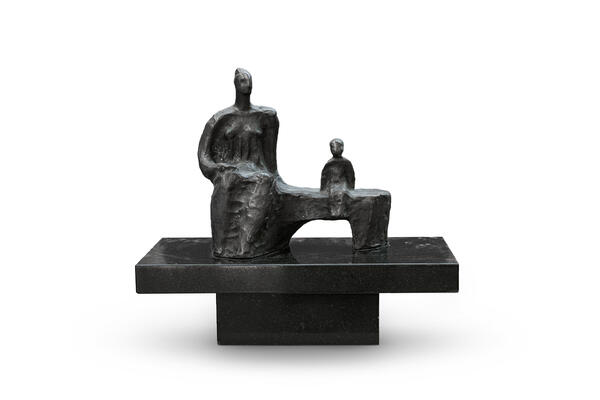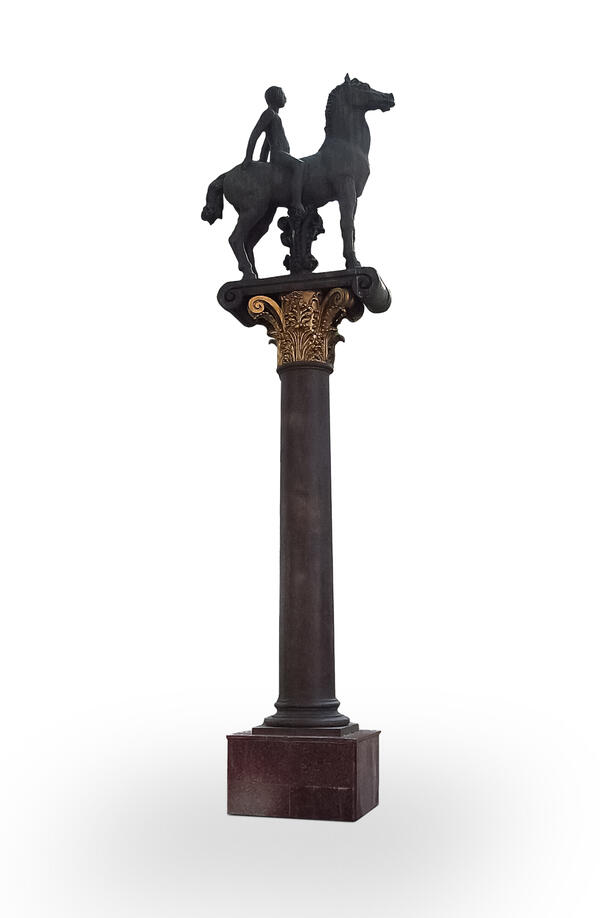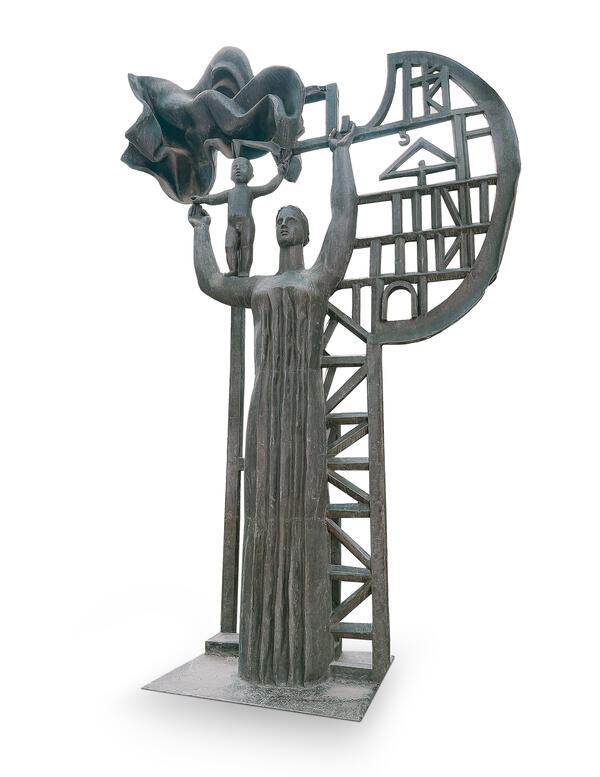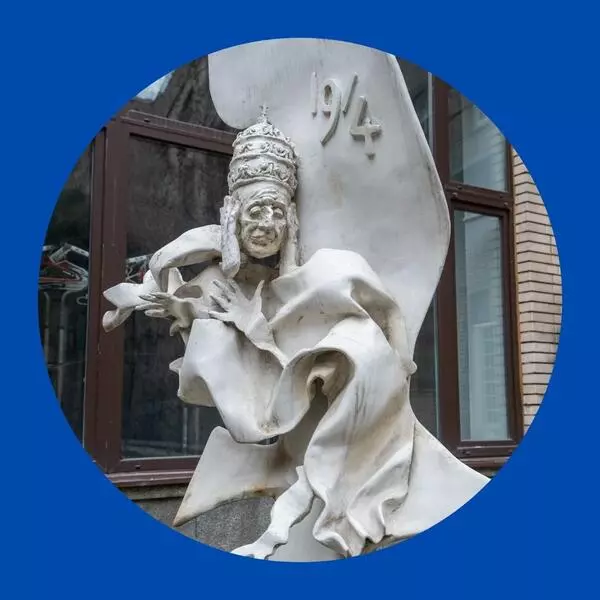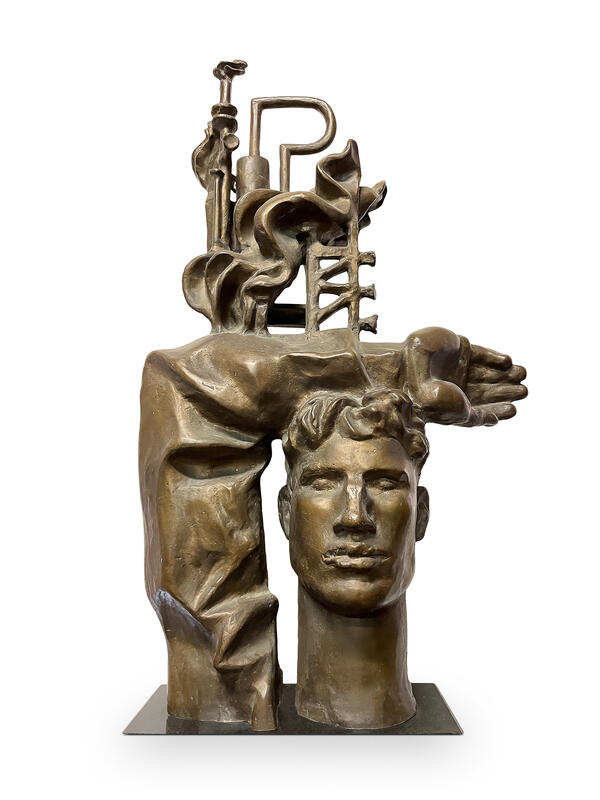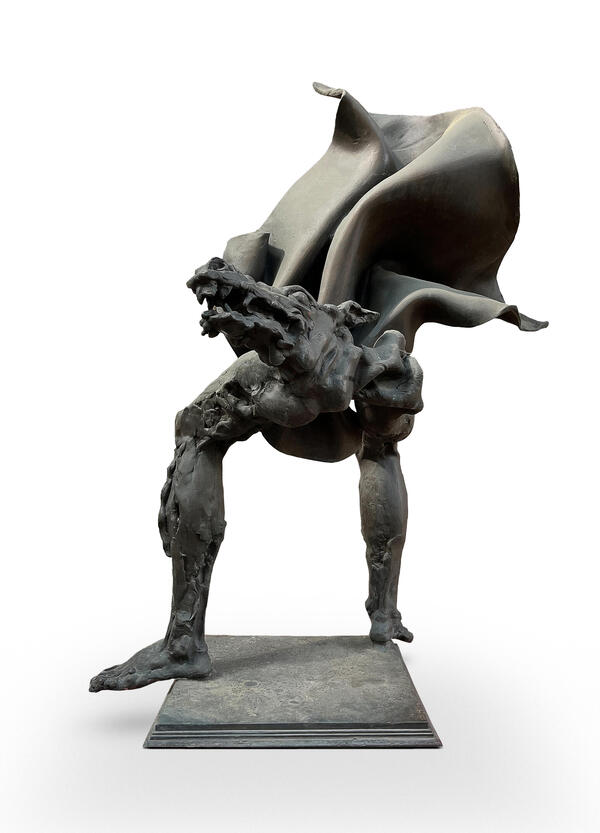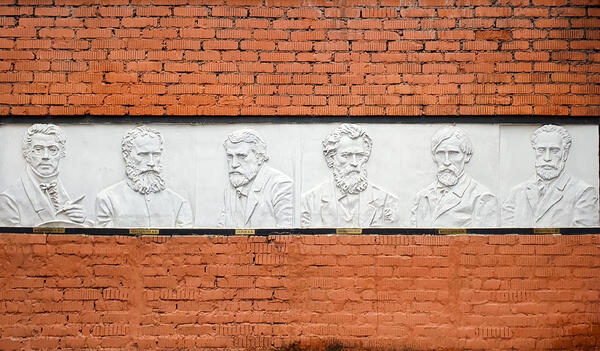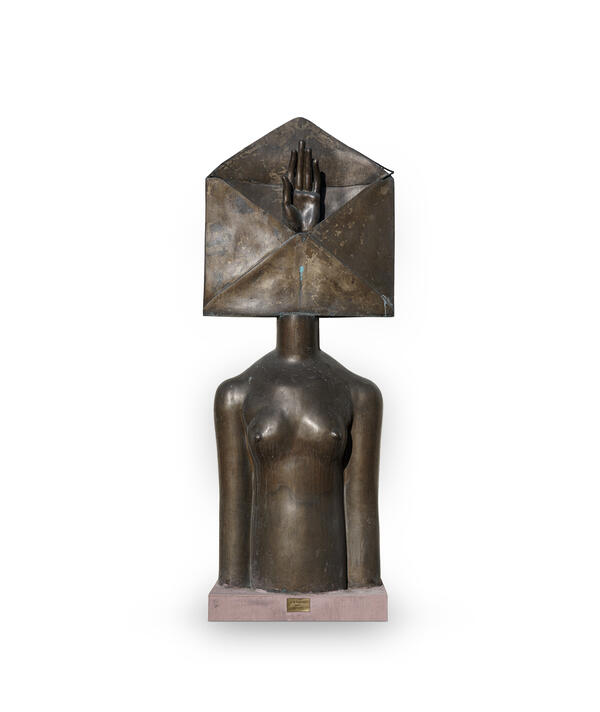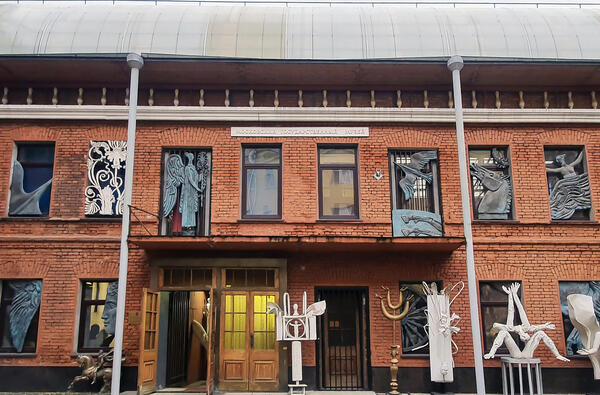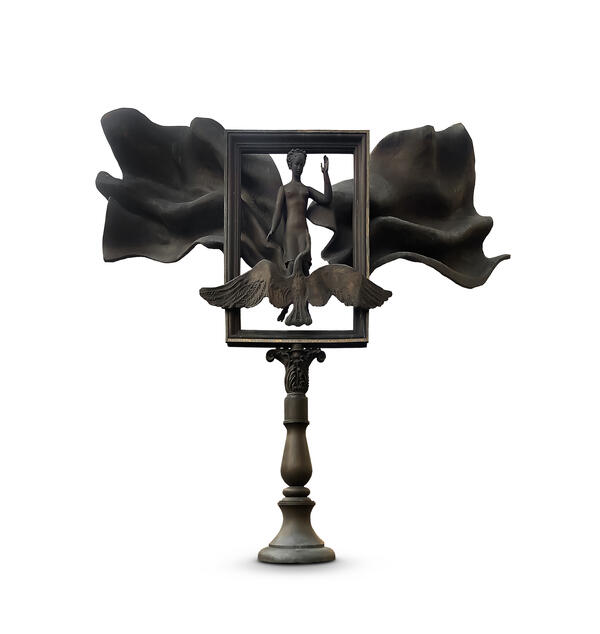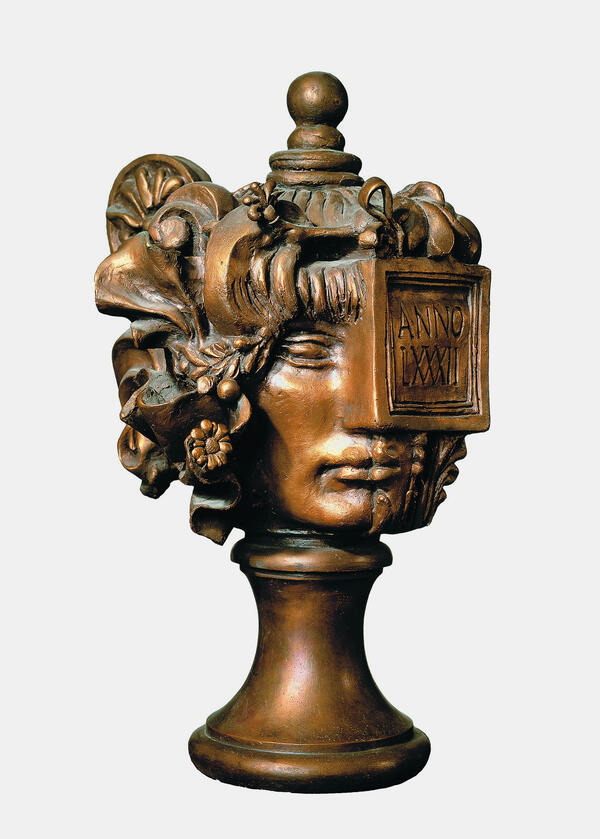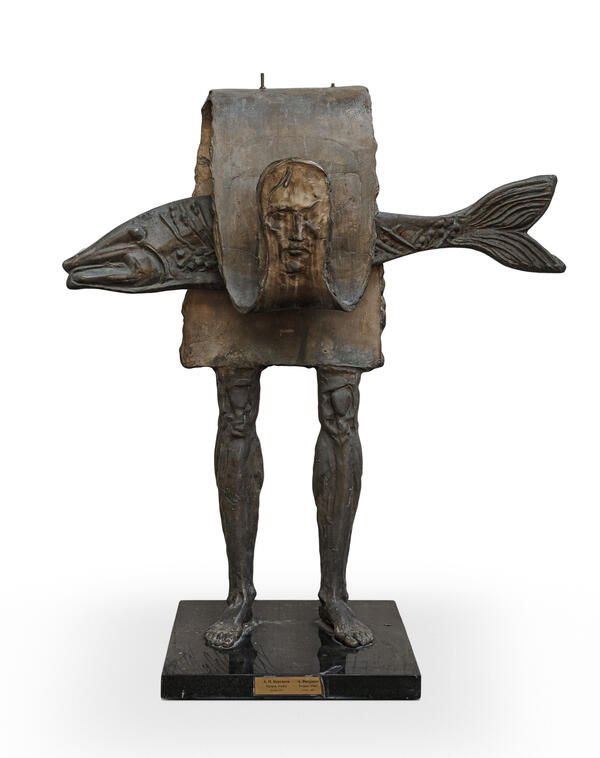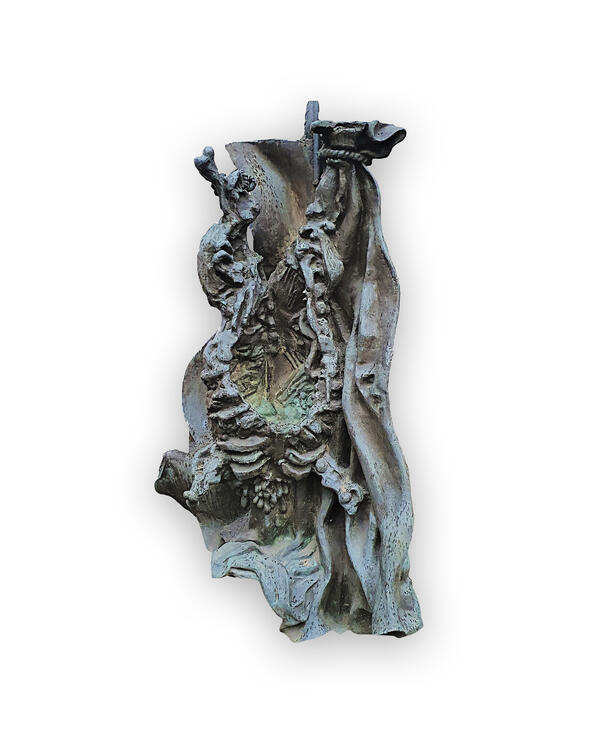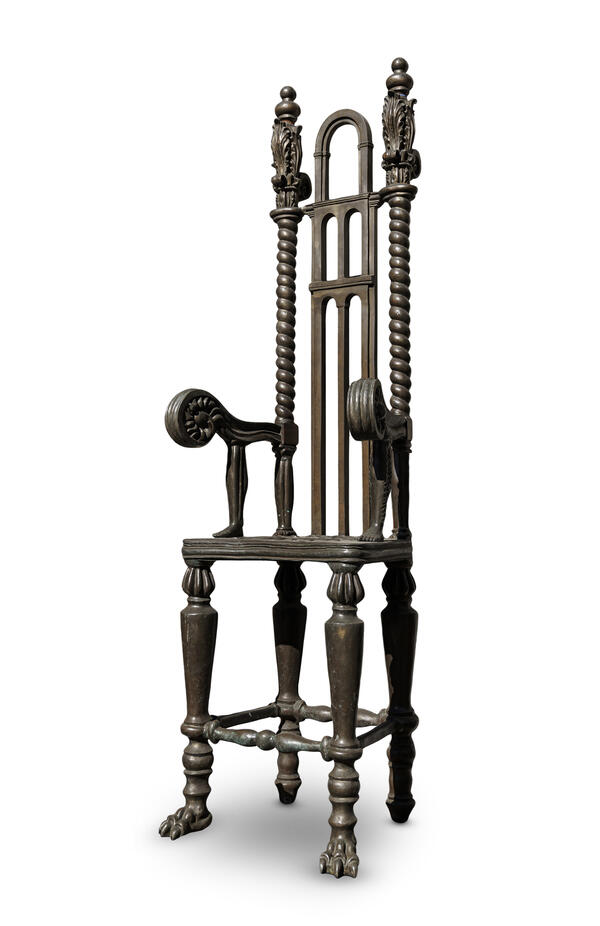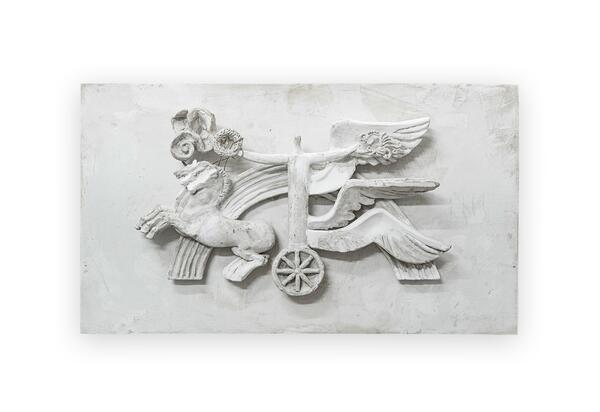Fantastic transformations are one of the favorite motifs in the sculptural art of Alexander Nikolayevich Burganov. Instead of creating a static and isolated image, he seeks to show its formation, make the viewer believe that the sculptural forms are developed right in front of them. At the same time, it is important for the sculptor to convey the illusion of the sculpture’s fluidity and emphasize its duality and subjective nature. To achieve this, he draws on ancient myths and the imagery of surrealism. An example of this creative approach is the sculpture “Birth of Pegasus”, bringing together an ancient myth, a surrealistic image, and metamorphosis.
Alexander Burganov combined two images from ancient mythology: the Gorgon Medusa and Pegasus. The sculptor described this composition in his essay “The Gorgon Medusa” which was published in his collection “Apocalypse for Violin and Orchestra”. In this work, the sculptor reinterpreted the ancient myth of Medusa who turned people into stone. In his version, the Gorgon turns people not into impersonal stones but rather into marble statues. Then, she takes the form of “a fantastic white-winged horse, flying away towards a darkened sun.”
According to the ancient myth, Pegasus and his brother Chrysaor were born when their mother, the Gorgon Medusa, was decapitated by Perseus. This scene is demonstrated in the artwork “Birth of Pegasus”. The Gorgon is depicted with an arrogant face. However, her only remaining eye no longer gazes at the viewer. The eyelid is slightly lowered. These are the last moments of her life. Right in front of the viewer, the other half of Medusa transforms into the head of a winged horse. Above her forehead, there is a small foot of the future giant Chrysaor and a spreading wing of Pegasus.
The sculptor depicted the moment of transformation, a kind of transition of one
mythological creature into another. The Gorgon’s head seamlessly transitions
into the horse’s head, while Chrysaor’s foot is incorporated into the
silhouette of the horse’s ear. The wings and Medusa’s hair create a silhouette
of a horse’s mane. All these elements are combined into a single composition
depicting the birth of Pegasus.

